Increase your chances
How to multiply your chances of winning the lottery
There are countless texts, videos and systems on the internet - and outside it - with the promise of numbers and schemes with greater chances of winning prizes in the most diverse lotteries - PowerBall, Mega Millions, Euromillions etc.. As you may have already noticed, Lotto-Lotto does not carry this type of promise. Although it is possible to increase your chances of winning prizes in the lottery, this increase does not happen by forecasting the next draws.
Mathematics cannot predict numbers that will be drawn.
It's simple: there is no calculation or mathematical formula to predict the next numbers to be drawn. The chances of each number and combination of numbers are precisely the same in all draws, regardless
numbers previously drawn, or even the entire history of draws. It may seem like a heavy statement, perhaps too pretentious. How is it possible to affirm this?
The draws have no memory.
Indeed, when the numbers are drawn, there is no natural or supernatural force to evaluate the previous draws and change the weight of the balls.
The odds are always the same for each draw.
To illustrate this, think of a simple heads-up game. When you flip a coin, the chance of each of the two sides ("heads" or "tails") occurring is 50%. If you throw that same coin ten times in a row,
the result of each move will not be interfered with from any previous move, and will not interfere with any subsequent move.
"If 'tails' occurs nine times in a row, 'heads' is late and more likely to leave, right?”
Wrong. If "tails" occurs nine times in a row, the chances of "tails" occurring again on the tenth play will still be 50% (1 in 2) - the same chances of occurring "heads". If you flip the coin ten, twenty, a hundred times, the
chances of "heads" or "tails" will remain 50% with each move.
"But are the chances of ten consecutive 'tails' not very low?"
Yes, the chances of a "tails" occurring in ten consecutive moves are low - 1 in 1024, to be more exact. But this does not increase the chances of "heads" on the next play. To better understand, see this situation:
Before you start tossing the coin, ask yourself, "What are the chances of ten consecutive 'heads'?” When calculating, you will see that the answer is "1 in 1024". Then you, always curious, ask: "What are the chances
of nine consecutive 'tails' and, on the tenth play, 'heads'?”. The formula is the same, and the result too: 1 in 1024.

The same reasoning applies to lotteries.
The odds of every ball in the lottery work the same way: they remain the same for each draw. When we see that a ball has not been drawn in Powerball for over a year, we imagine that, because it is so "late", its chances
to be drawn soon increase. It is a wrong conclusion, based on misleading reasoning. The chances of such a ball being among the five drawn in the next draw remain the same.
This mistaken belief is called "gambler's fallacy".
The gambler's fallacy is the belief that if something occurs less frequently than expected in a given period, it will occur more often in the future, or, similarly, if something occurs more frequently than
expected in a given period, will occur less frequently in the future.
It is also known as the "Monte Carlo fallacy", because of the most famous example of its observation. On August 18, 1913, during a game of roulette at the Monte Carlo Casino, the ball fell into a black house 26 times in a row.
Every time the ball fell on a black square, more people bet on the red square, believing that its occurrence was increasingly "delayed" and, therefore, closer to happening. And they lost a lot of money instead
because there were 26 consecutive occurrences in black house. It is a very unusual sequence, with 1 chance at 67,108,863. However, as we analyzed in the example of "consecutive tails" above, these are the same chances of
any other specific sequences of 26 draws between "black" or "red".
What are the odds in the lottery, then?
In the case of Powerball, the chance of hitting the jackpot on a single ticket is 1 in 292,201,338. This means that, regardless of any results or statistics, any combination of balls and powerballs – be it "1, 2, 3, 4, 5 (6)", "11, 38, 47, 67, 69 ()" or "13, 39, 57, 59, 67 (12)" –, has 1 chance in 292,201,338 to be drawn.
The chances of gettinga jackpot with a single ticket are minuscule.
The chances of single tickets are truly laughable, indeed. From the point of view of mathematical probability, it is safe to say that lotteries are not made for people to make money, but to lose. Our
eyes shine so much when seeing the accumulated millions, to the point of forgetting that the values accumulate precisely because of the very low probability of success.
Math tells what to expect in the next draws
In fact, it does. The Law of Large Numbers says that the more times an experiment is repeated, the average of its results will be closer and closer to the expected value (the expected average).
As its name reveals, however, it applies to large samples. That is, it concerns the numerous future draws, and not exactly the next draw. In fact, what that law says - and that is still
very interesting - is that we should expect from lottery draws fidelity to mathematical probability.
This means that, in general and in all purely mathematical analysis, the average of the draws will respect the expected average according to the mathematical probability.
Is it too theoretical? Let's demonstrate the Law of Large Numbers!
It is known that the jackpot chance of a single ticket is 1 in 292,201,338 in Powerball, or that the chance of hitting at least a white ball is 5 in 69, or that the chance of hitting the powerball is 1 in 26. To talk about applied probability, let's use a more complex example.
What is the chance, for example, that among the five numbers drawn in Powerball, they will all be odd numbers?
The odds of the five white balls in a draw being odd numbers are 2.8885%, or 1 in 34.62. From there, we can say that, after 1035 Powerball draws with the current matrix, mathematical probability and the Law of Large Numbers
tells us that we should expect that 2.8885% of these draws (therefore, 29.90 draws – i.e., between 29 and 30 draws) will have only odd numbers (in white balls).
Analyzing all the Powerball draws (with the current matrix) so far, we find that in exactly 26 of them occurred only odd numbers (in white balls). In other words, although it is not possible to predict exactly when a draw will present only
odd numbers (in white balls), it can be expected that the average of intervals between draws that only have odd numbers (in white balls) is approximately 34.62.
For more examples and applications, see our Statistics section. It shows numerous facts and expectations in several categories – that is, how many times each event occurred and how many
times it is expected to have occurred, applying the mathematical probability in the same way as in this example.
As noted in the example above and in the pages of Lotto-Lotto about Statístics, the facts are strikingly close to what mathematical probability tells us. This observation is described by the Law of Large
Numbers.
In practice, this means that while there is no way to predict numbers for the next draw, the study of probabilities shows us what average behaviors to expect in lottery draws.
How will this help me win the lottery?
As it was said above, mathematics itself cannot predict numbers for the next draw. Statistics and probability can be used as betting strategies, and also to note that,
in general, the draws of most lotteries are apparently not manipulated, since their facts are very close to mathematical expectations.
Math can increase your chances.
There is a mathematical way to truly multiply your chances much more effectively than by analyzing the numbers that came out most in a given lunar phase. It is a simple but often overlooked form.
To multiply your chances, you must multiply your tickets. By making more plays, you increase your chances much more than buying magic formulas on the internet.
See: by playing 5 numbers in Powerball, you have 1 chance in over 292,201,338. However, playing 100 tickets, you get 1 chance in 2,922,013. With 1,000 tickets, you have 1 chance in 292,201 of a jackpot.
You can bet more without paying as much.
Playing more tickets does not necessarily mean spending a lot more money. By participating in lottery pools, you optimize your lottery spending. The prizes are divided, but so are the expenses, and all participants are
much more likely to win prizes.
Soon, we will make available lotto pools for Powerball and other lotteries. Stay tuned and keep in mind:
Better to win in a group than to lose alone!
Main
Results
Statistics
Wheels
Subscription


